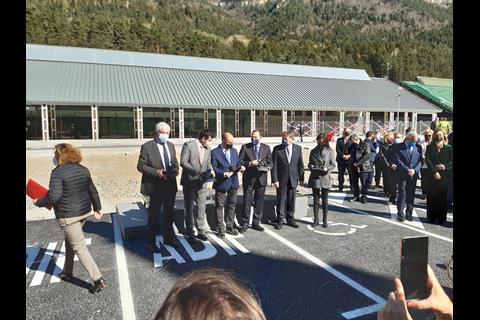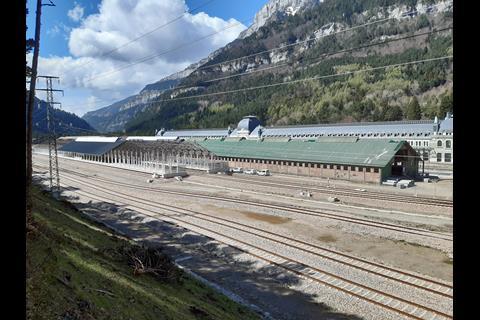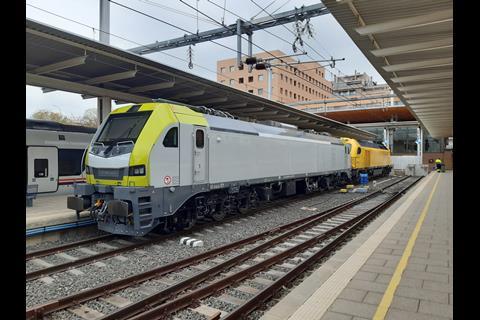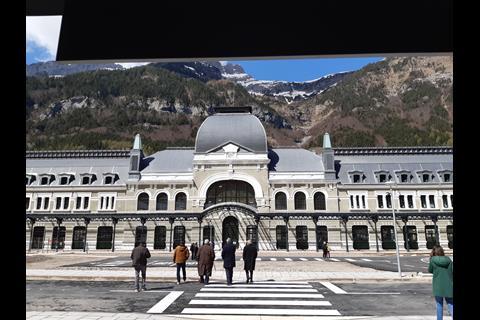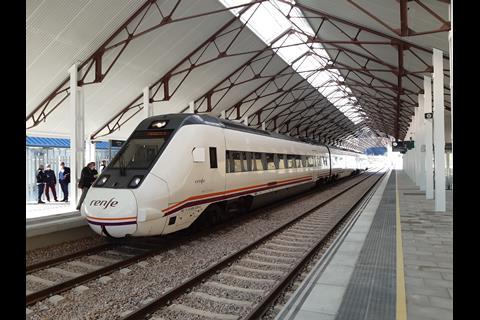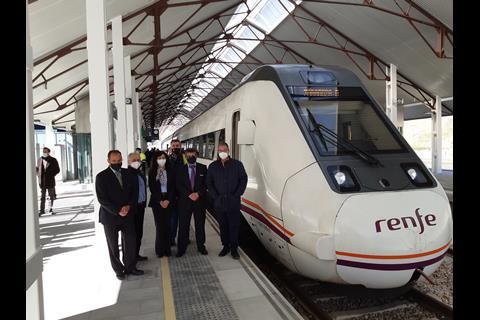SPAIN: On April 15, a RENFE DMU carrying invited guests from Zaragoza became the first train to arrive at the remodelled and relocated station in Canfranc, marking a further step in the long-running plan to reinstate the railway through the Pyrénées mountains linking Pau with Huesca.
The cross-border section between Canfranc and Oloron-Sainte-Marie closed in 1970 following a freight train derailment on the French side. Since then, a series of campaigns have sought to reopen the railway, and these have gained renewed momentum in the past five years following SNCF Réseau’s reactivation of the 27 km between Oloron and Bedous in July 2016. At that time, it had been hoped that the rest of the line through the Somport tunnel to Canfranc could have been reopened by 2020.
However, this required more work on the Spanish side, notably at Canfranc itself, where the vast former international station building had become something of a symbol of the decline of the railway. The 9 162 m2, 241 m long building has been restored at a cost of around €27m, and is to be fitted out as a five-star 104-bedroom hotel, scheduled for opening in late 2022. Meanwhile, RENFE’s twice-daily DMU shuttle to Zaragoza used a temporary platform to the west of the station.
Possible regauging
With reopening as a through route back on the agenda, ADIF began work in March 2019 to remodel Canfranc station, creating a simplified layout and developing new platforms and facilities on the eastern side of the original structure. This was inaugurated on April 15 following the arrival of the morning train from Zaragoza, formed of a Class 596 railcar.
The revamped station area has seven 1 668 mm gauge tracks equipped with gauge-convertible polivalente sleepers. Three are for use by passenger services, the others for freight. Total investment was €10m, including €2m in grants from the EU’s Connecting Europe facility.
Among the dignitaries attending the inauguration were Spanish Minister of Development & Transport Josè Luis Ábalos; Javier Lambán, the President of Aragón region; ADIF President Isabel Pardo de Vera; and Nouvelle Aquitaine’s Vice-President of Economic Development, Bernard Uthurry.
Hopes were expressed that once the cross-border route has been reopened, expected to cost €300m and now due for completion in 2025, the line between Canfranc and Huesca could be regauged to 1 435 mm. In October last year, the Minsitry of Development awarded consultancy Geocontrol an 18-month contract to study options for regauging.
There are also aspirations to electrify the line, which is widely seen as a potential extension to the Mediterranean Corridor freight axis from Sagunt and Valencia to Zaragoza via Teruel, which is currently being wired.















